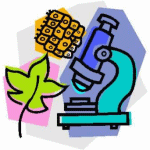Biology
|
2 february 2016 04:05:09 |
| A paneukaryotic genomic analysis of the small GTPase RABL2 underscores the significance of recurrent gene loss in eukaryote evolution (Biology Direct) |
|
Tweet Background:
The cilium (flagellum) is a complex cellular structure inherited from the last eukaryotic common ancestor (LECA). A large number of ciliary proteins have been characterized in a few model organisms, but their evolutionary history often remains unexplored. One such protein is the small GTPase RABL2, recently implicated in the assembly of the sperm tail in mammals.
Results:
Using the wealth of currently available genome and transcriptome sequences, including data from our on-going sequencing projects, we systematically analyzed the phylogenetic distribution and evolutionary history of RABL2 orthologs. Our dense taxonomic sampling revealed the presence of RABL2 genes in nearly all major eukaryotic lineages, including small “obscure” taxa such as breviates, ancyromonads, malawimonads, jakobids, picozoans, or palpitomonads. The phyletic pattern of RABL2 genes indicates that it was present already in the LECA. However, some organisms lack RABL2 as a result of secondary loss and our present sampling predicts well over 30 such independent events during the eukaryote evolution. The distribution of RABL2 genes correlates with the presence/absence of cilia: not a single well-established cilium-lacking species has retained a RABL2 ortholog. However, several ciliated taxa, most notably nematodes, some arthropods and platyhelminths, diplomonads, and ciliated subgroups of apicomplexans and embryophytes, lack RABL2 as well, suggesting some simplification in their cilium-associated functions. On the other hand, several algae currently unknown to form cilia, e.g., the “prasinophytes” of the genus Prasinoderma or the ochrophytes Pelagococcus subviridis and Pinguiococcus pyrenoidosus, turned out to encode not only RABL2, but also homologs of some hallmark ciliary proteins, suggesting the existence of a cryptic flagellated stage in their life cycles. We additionally obtained insights into the evolution of the RABL2 gene architecture, which seems to have ancestrally consisted of eight exons subsequently modified not only by lineage-specific intron loss and gain, but also by recurrent loss of the terminal exon encoding a poorly conserved C-terminal extension.
Conclusions:
Our comparative analysis supports the notion that RABL2 is an ancestral component of the eukaryotic cilium and underscores the still underappreciated magnitude of recurrent gene loss, or reductive evolution in general, in the history of eukaryotic genomes and cells.ReviewersThis article was reviewed by Berend Snel and James O. McInerney. |
| 124 viewsCategory: Biology |
 NuMA Phosphorylation by Aurora-A Orchestrates Spindle Orientation (Current Biology) NuMA Phosphorylation by Aurora-A Orchestrates Spindle Orientation (Current Biology)Pleistocene Mitochondrial Genomes Suggest a Single Major Dispersal of Non-Africans and a Late Glacial Population Turnover in Europe (Current Biology) 
|
| blog comments powered by Disqus |
MyJournals.org
The latest issues of all your favorite science journals on one page
The latest issues of all your favorite science journals on one page



